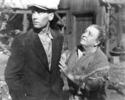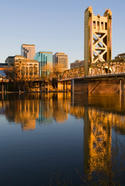The first lesson to be learned from this earlier era is that a large middle class requires an economy that generates a broad base of jobs paying middle-class wages. The New Dealers were not opposed to "rigging" the labor and financial markets to achieve this result. New Deal progressives believed the economy should exist to serve society, not the other way around, and that the government has a duty to shape the economy to meet middle-class aspirations. read more »
Economics
Public Investment, Decentralization and Other Economic Lessons from the New Deal
New Deal Investments Created Enduring, Livable Communities
Growing appeals for more public infrastructure investment make two critical claims: that this would help stimulate the economy in the short run while making our country more productive over the long run. Unlike tax rebates and other short-term stimulus, a major infrastructure investment program can have powerful effects on community life beyond boosting spending at the local Wal-Mart. read more »
The New Deal & the Legacy of Public Works
Almost completely ignored in the press this year has been the 75th anniversary of the New Deal. Social Security, public housing, school lunches, deposit insurance, labor relations standards and banking regulations are among its many enduring legacies. On this anniversary, it is worth looking at the public works programs that constructed roads and buildings that still exist in every county in America. read more »
Progressives, New Dealers, and the Politics of Landscape
One of the greatest ironies of our time is the fact that today’s leading progressives tend to despise the very decentralized landscape that an earlier generation of New Deal liberals created. read more »
New York’s Next Fiscal Crisis
Mayor Bloomberg needs to prepare the city for the crash of the Wall Street gravy train. read more »
- Login to post comments
Questioning Conventional Wisdom: Should Poor Folks Stay Put?
There is reason to think again about the now-current idea of dispersing the population of poor folks in the Skid Row district of downtown Los Angeles and similar precincts in other cities across the U.S.
There’s cause to pause over notions such as mixing “affordable housing” that’s priced in the range of working-class or poor folks alongside spiffy market-rate units. read more »
The Entrenchment of Urban Poverty
How high urban housing costs and income inequality have exacerbated urban poverty
A few years ago, on a drive from New York to Washington, I turned off I-95 in Baltimore to see H.L. Mencken’s home. Abandoned row houses lined the street, some boarded up with plywood, others simply gutted. Signs offering fast cash for houses and a number to call for unwanted cars outnumbered pedestrians. It was a landscape of rot and neglect with few signs of renewal and investment. read more »
Dayton, Ohio: The Rise, Fall and Stagnation of a Former Industrial Juggernaut
What Dayton can tell cities about staying competitive in the global economy read more »
Sacramento 2020
Even in the best of times, Sacramento tends to be a prisoner to low self-esteem. The region's population and economic growth have been humming along nicely for the past decade, drawing ever more educated workers from overpriced coastal counties, but the region's leaders have often seemed defensive about their flourishing town. read more »
In Praise of Manufacturing & Industrial Zones
My father made the huge piece of art that sits proudly on display at the entrance of the Daley Center Plaza in Chicago. Pablo Picasso designed this particular sculpture—or conceived it…or bent it with artistic vision…or however you want to put it.
But my father made it.
I’ve believed that since I was a small child. It’s a belief based mostly in filial pride, but there is some truth to it. Picasso, as I understand it, ordered the material for his untitled sculpture from the steel mill where my father worked at the time. read more »
- Login to post comments






















